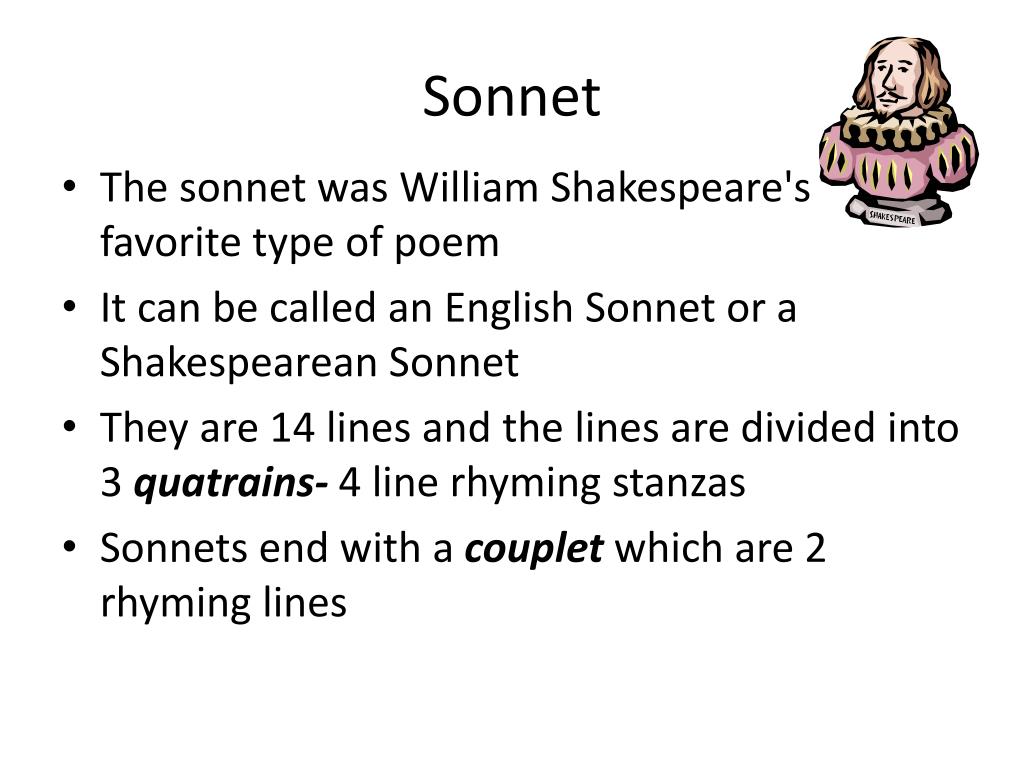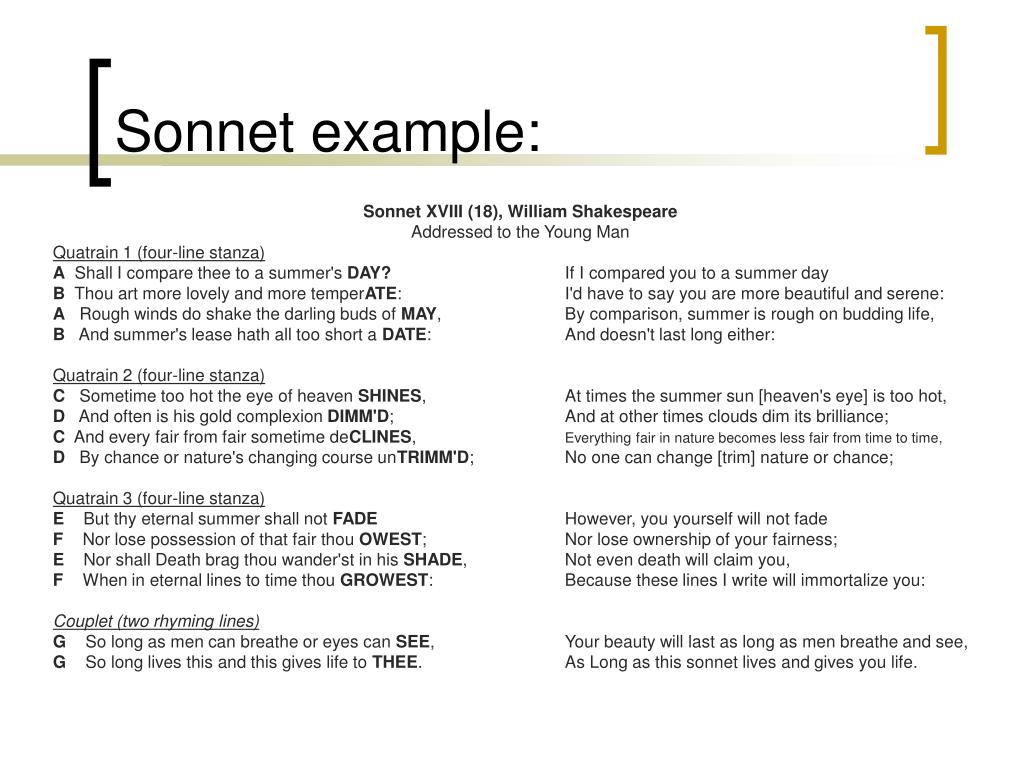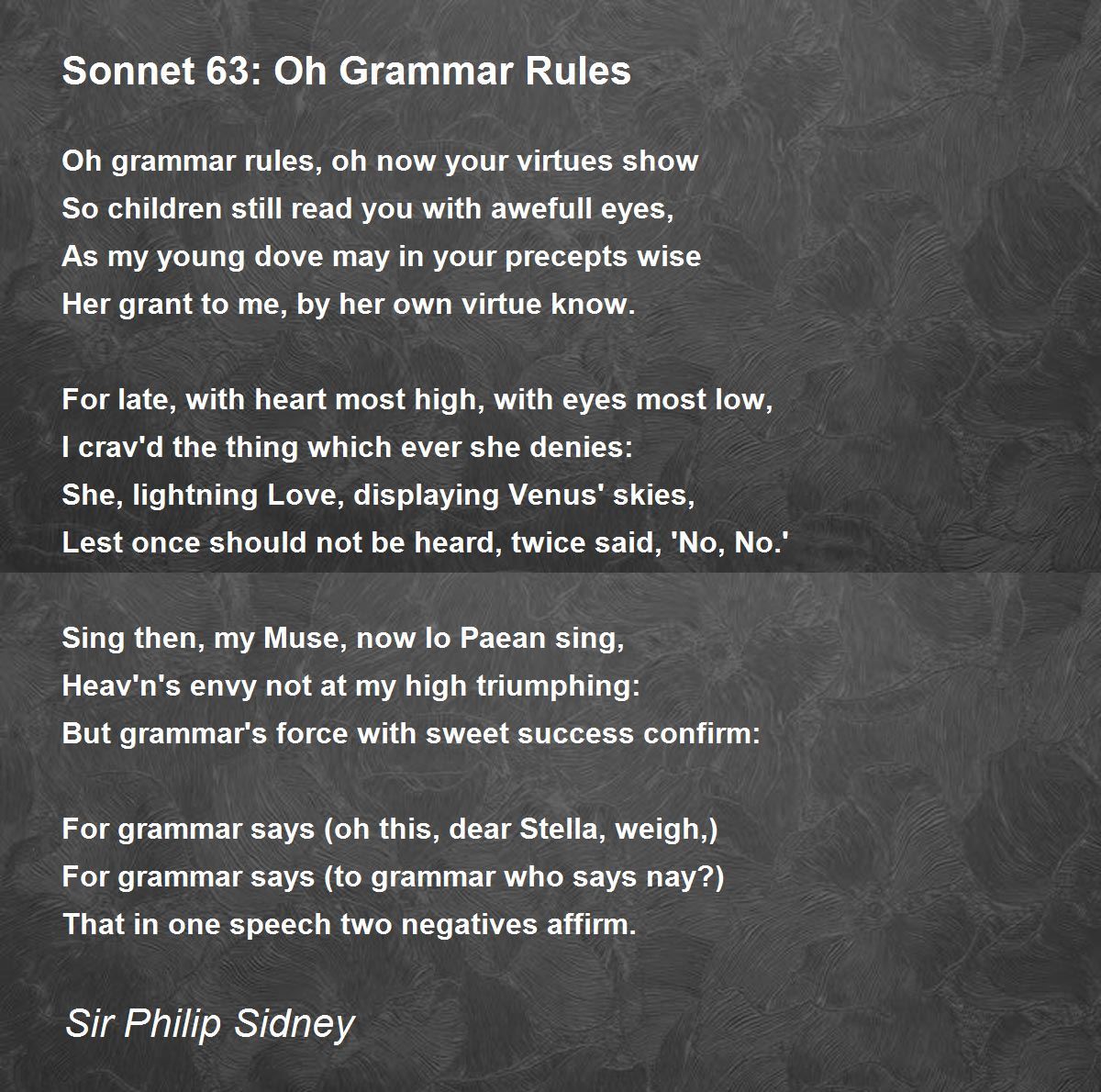
The terza rima was invented by the Italian poet Dante Alighieri in the late thirteenth century to structure his three-part epic poem, The Divine Comedy. There are no limits to the number of lines a poem composed in terza rima may have. If another line length is chosen, such as tetrameter, the lines should be of the same length. Terza rima is typically written in an iambic line, and in English, most often in iambic pentameter. Thus, the rhyme scheme (aba, bcb, cdc, ded) continues through to the final stanza or line. The end-word of the second line in one tercet supplies the rhyme for the first and third lines in the following tercet. Till Love and Fame to nothingness do sink.The terza rima is a poem, Italian in origin, composed of tercets woven into a complex rhyme scheme. Of the wide world I stand alone, and think Their shadows, with the magic hand of chance Īnd when I feel, fair creature of an hour, When I behold, upon the night’s starr’d face, Hold like rich garners the full-ripen’d grain This sonnet is broken into two stanzas, but it still fits in the Shakespearean sonnet form.īefore my pen has glean’d my teeming brain,

His sonnet, When I Have Fears, deals directly with the writer’s fear of dying early and not having time to fall in love and become known for his writing. He was only able to write for about six years of his life, but he remains a beloved poet for his sensual imagery and beautiful use of language. He died at age 25 after battling tuberculosis for years. John Keats, despite being one of the most famous English poets, lived a very short life. To love that well which thou must leave ere long. This thou perceivest, which makes thy love more strong, In me thou see'st the glowing of such fireĬonsumed with that which it was nourish'd by. Which by and by black night doth take away,ĭeath's second self, that seals up all in rest. In me thou seest the twilight of such day Upon those boughs which shake against the cold,īare ruin'd choirs, where late the sweet birds sang. When yellow leaves, or none, or few, do hang That time of year thou mayst in me behold However, in the final couplet, the speaker talks directly to his lover about how his advanced age makes the remaining time they have together more precious. Using beautiful imagery of the changing seasons and ending daylight, he reveals that the speaker is aged.

In this poem, Shakespeare explores the theme of mortality as it relates to love. So long lives this, and this gives life to thee.Īnother famous Shakespearean sonnet is Sonnet 73. So long as men can breathe or eyes can see, When in eternal lines to time thou grow’st: Nor shall death brag thou wander’st in his shade, Nor lose possession of that fair thou ow’st Sometime too hot the eye of heaven shines,Īnd every fair from fair sometime declines,īy chance or nature’s changing course untrimm'd Rough winds do shake the darling buds of May,Īnd summer’s lease hath all too short a date However, in the final couplet, the real meaning is revealed: Writing about the beauty of the subject makes that beauty immortal. What is certain is that the speaker compares the subject to a beautiful summer’s day, acknowledging that even the most perfect day will fade. Some people believe that Shakespeare wrote this sonnet for a man, but no one is sure. It deals with the themes of beauty and love but also of the timelessness of art. Sonnet 18 is one of Shakespeare’s most famous sonnets.

This couplet, the last two lines of the poem, reveals the entire point of the sonnet: The speaker does not need to exaggerate the beauty of his mistress to love her deeply.

It’s almost an insulting poem until you get to the final two lines:Īnd yet, by heaven, I think my love as rare Her breath is not as lovely as perfume and may even have an unpleasant odor. Not every Shakespearean sonnet lets the form control the meaning in this way, but many do.įor example, in Sonnet 13, the first 12 lines are making ordinary and even unfavorable comparisons about the beauty of the speaker’s mistress. Then in the final couplet, the true meaning of the poem is revealed. The three quatrains that make up the first 12 lines explore a common theme. In many cases, the Shakespearean sonnet form also affects the content of a poem.


 0 kommentar(er)
0 kommentar(er)
